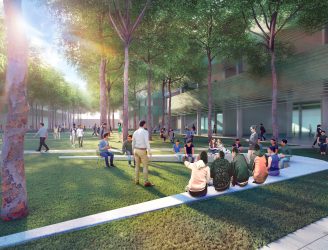Search
Sorry, no results found. Please try adjusting your search.
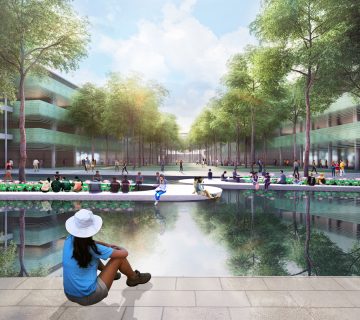
Fulbright University is Vietnam’s first independent, not-for-profit higher education institution. The initial campus Master Plan, developed by SHoP Architects, establishes a phased planning framework aligned with the school’s growth. Within this framework, landscape principles coalesce into a campus that is engaging, flexible, and diverse. The overall vision is the result of a multi-disciplinary collaboration between local design experts, landscape architects, architects, and engineers from across the globe.
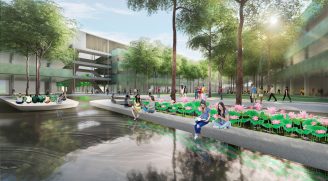
Vietnam has a rich rural agricultural history as well as a thriving urban core. A common theme between both is the local attitude toward and treatment of seasonal rain fall.
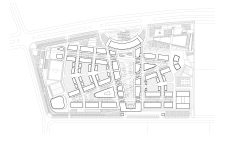
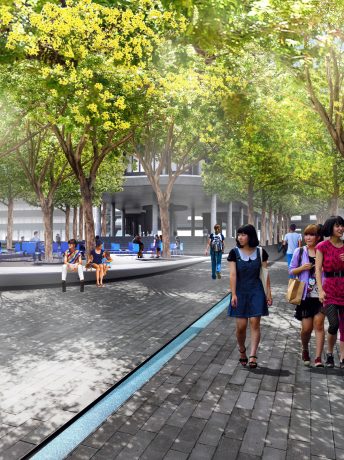

Contextual stone and wood comprise supporting landscape elements in this outdoor space, from paving to furniture and custom pieces. By deferring to local expertise to guide design research, the overall landscape strategy is not only cost and maintenance sensitive, but also reflects Vietnamese culture and traditions.
Contextual stone and wood comprise supporting landscape elements in this outdoor space, from paving to furniture and custom pieces. By deferring to local expertise to guide design research, the overall landscape strategy is not only cost and maintenance sensitive, but also reflects Vietnamese culture and traditions.
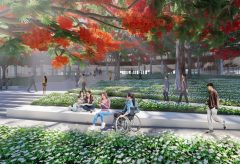

The site design taps into this strategy to develop a water treatment/conveyance system that is visible and accessible throughout the entire campus. This, in turn, supports a native plant palette that thrives in both wet and dry seasons. These specimens make up parts of an outdoor classroom where students and faculty can learn about food production, best horticulture practices, mosquito control, and experience sacred native plant species.
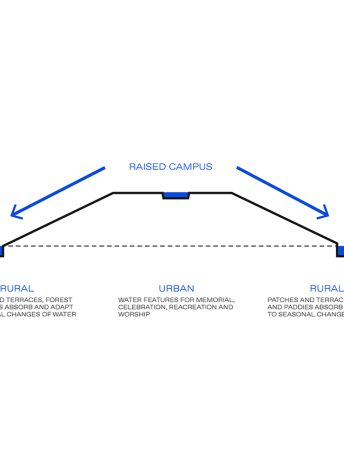
The site design taps into this strategy to develop a water treatment/conveyance system that is visible and accessible throughout the entire campus. This, in turn, supports a native plant palette that thrives in both wet and dry seasons. These specimens make up parts of an outdoor classroom where students and faculty can learn about food production, best horticulture practices, mosquito control, and experience sacred native plant species.
